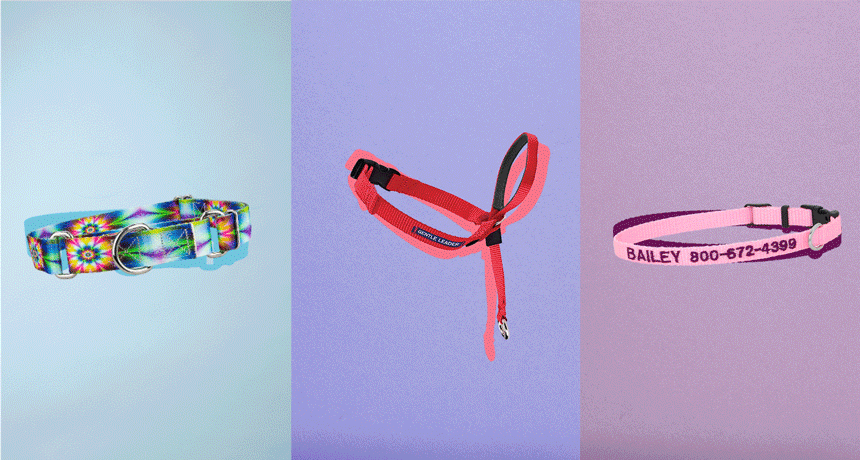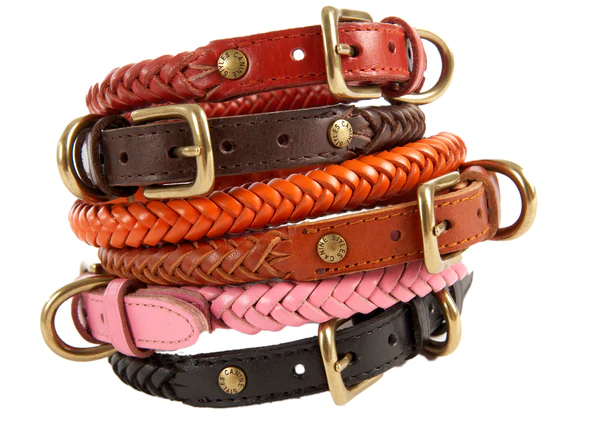The Perfect Dog Collar – Ensuring Safety, Style, and Comfort

Are you in the market for a new dog collar? With so many options available, it can be overwhelming to choose the perfect choose a collar for your furry friend. But fear not! This article will guide you through the process, ensuring that you find a collar that prioritizes safety, style, and comfort for your beloved pet. Read on to discover the key factors to consider when selecting a dog collar that meets all your requirements.
Table of Contents
Why is Choosing the Right Dog Collar Important?
Your dog’s collar is more than just a fashion statement. It serves several vital purposes, including identification, control, and safety.
Identification
A collar provides a convenient place to attach identification tags that display your contact information. This ensures that if your dog ever gets lost, they can be quickly reunited with their loving family.
Control
A collar with a leash attachment allows you to have control over your dog during walks and other outdoor activities. This control is particularly important for training purposes and keeping your dog safe in potentially dangerous situations.
Safety
The right collar can offer an extra layer of safety for your dog. Specialized collars with reflective materials make your dog more visible at night, reducing the risk of accidents. Additionally, certain collars have built-in GPS tracking devices, allowing you to easily locate your furry friend if they wander off.
Factors to Consider When Choosing a Dog Collar
Now that we understand the importance of choosing the right dog collar, let’s explore the key factors to consider when making your selection.

Size
The size of the collar is crucial for both comfort and safety. A collar that is too tight can cause discomfort, skin irritation, and even breathing difficulties. On the other hand, a collar that is too loose may slip off, putting your dog at risk of getting lost. Measure your dog’s neck circumference accurately and choose a collar that fits snugly, with enough space for two fingers to fit between the collar and your dog’s neck.
Material
Dog collars come in a variety of materials, each with its own advantages and disadvantages. Common materials include nylon, leather, and chain. Nylon is lightweight, easy to clean, and comes in various colors and patterns. Leather is durable and can develop a rich patina over time. Chain collars, also known as choke collars, should only be used for training and under the guidance of a professional.
Style
While style may not be a top priority for your dog, it’s always fun to dress them up in a collar that reflects their personality. From vibrant patterns to personalized engravings, there’s a wide range of styles to choose from. Just ensure that style doesn’t compromise the comfort and safety of the collar.
Closure Type
Collars typically have either buckle closures or quick-release closures. Buckle closures provide a secure fit but may take longer to fasten and remove. Quick-release closures, as the name suggests, allow for easy and quick removal, which can be especially important in emergency situations.
Additional Features
Consider any additional features that may benefit your dog’s specific needs.

For example, if your dog pulls during walks, a collar with a front attachment point can discourage pulling behavior. If your dog loves to swim, opt for a waterproof collar. Always prioritize your dog’s safety and comfort when considering additional features.
The Verdict: Which Dog Collar Should You Choose?
When it comes to choosing the perfect dog collar, there is no one-size-fits-all answer. Your decision should be based on your dog’s size, comfort, safety requirements, and personal style preferences. By considering these factors and exploring the available options, you’ll be able to select a collar that keeps your furry friend happy, safe, and stylish.
Conclusion
Certainly! It seems like you’re looking for information or a conclusion about dog collars. However, your request is a bit open-ended. Could you please provide more details or specify the information you’re seeking? Are you looking for information on types of dog collars, their uses, safety considerations, or something else? Once you provide more context, I’ll be happy to help you with a conclusion or any specific information you need about dog collars.
FAQs
Q1: What materials are commonly used in making dog collars?
Collars are often crafted from materials such as nylon, leather, or fabric, providing durability and comfort for your furry friend.
Q2: Are there specific collars recommended for training purposes?
Yes, training collars like the martingale or slip collars are designed to aid in obedience training, offering better control without causing harm to the dog.
Q3: How do I measure my dog for the right collar size?
Measure your dog’s neck circumference with a flexible tape, ensuring a snug fit without being too tight. Add a couple of inches for comfort.
Q4: Can I wash my dog’s collar, and if so, how?
Most collars are washable. Remove any detachable parts, and hand wash the collar using mild soap. Air-dry it thoroughly before putting it back on your dog.
Q5: Are there collars suitable for dogs with sensitive skin or allergies?
Yes, hypoallergenic collars made from materials like neoprene or specific types of leather are available, catering to dogs with sensitive skin or allergies.





